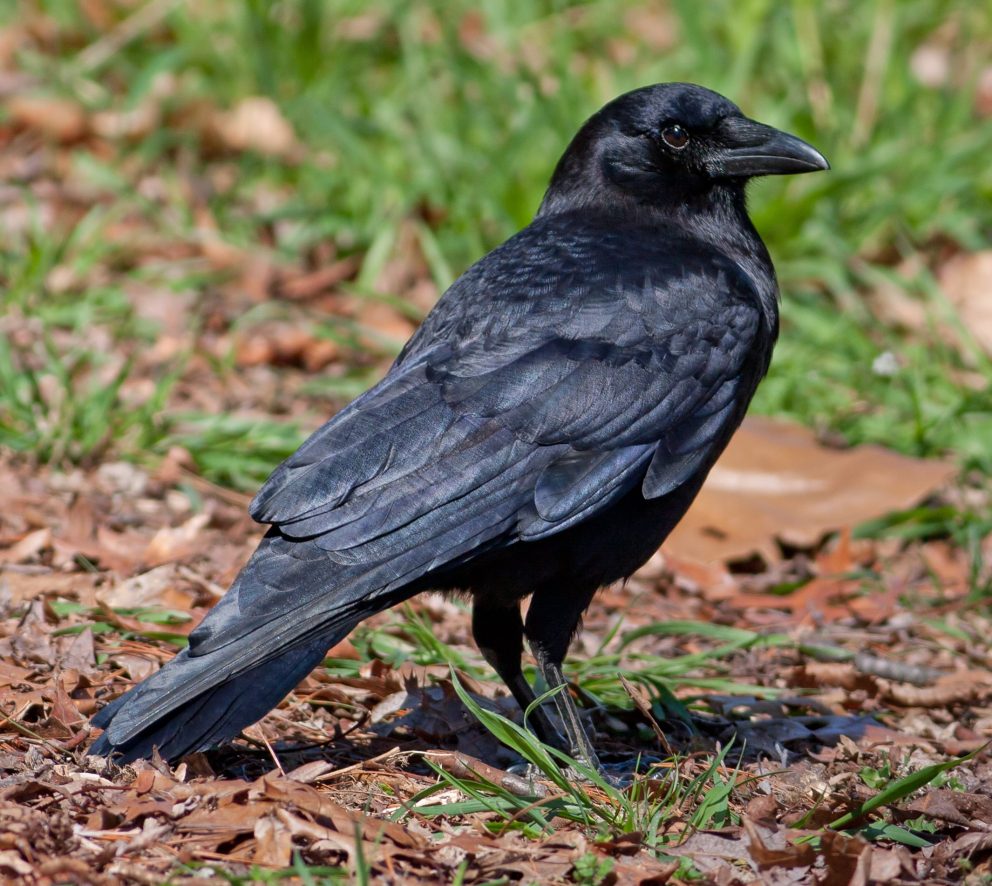- SCIENTIFIC NAME
- Corvus brachyrhynchos
- CLASSIFICATION
- Bird
- LIFE SPAN
- 7-8 Years
- SIZE
- 15.8-20.9” | 0.7-1.37lbs
- STATE CONSERVATION STATUS
-
- State Protected
- FEDERAL CONSERVATION STATUS
- Least Concern
- GAME STATUS
- Game
- GAME TYPE
- Upland Game
- Washoe
- Humboldt
- Pershing
- Churchill
- Mineral
- Lyon
- Douglas
- Carson City
- Storey
- Elko
- Lander
- Eureka
- White Pine
- Esmeralda
- Nye
- Lincoln
- Clark
Habitat & Range
American Crows are extremely adaptable and can be found in many different habitats though they are most often seen in open woodlands where there are trees to perch and find food. They are uncommon in Southern Nevada but found in the northern portion of the state.
- Agricultural Lands
- Developed Landscapes
- Upland Forests
Threats
- Disease
Natural History
American Crows have a wide-ranging diet, taking advantage of any available food source. They feed mostly on the ground, eating anything from seeds, grains, and nuts to small animals such as earthworms, insects, and mice. They are frequent nest predators to the eggs of other birds and will even eat aquatic shelled animals like mollusks by soaring high in the air and dropping them on rocks beneath them to break open. Similar to many birds of prey, like owls, crows will cough up indigestible parts of food in the form of pellets.
Crows are highly social birds, often remaining together throughout the year in a family group consisting of the breeding pair and their offspring. The offspring from previous seasons may even help the breeding pair in raising new broods. Outside of the breeding season, during the winter, crows will congregate in large roosts together, sometimes reaching numbers in the high thousands.
Fun Facts













